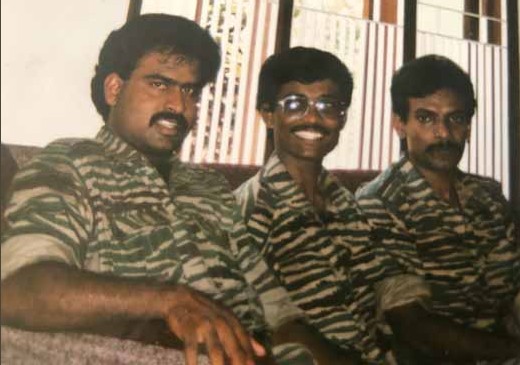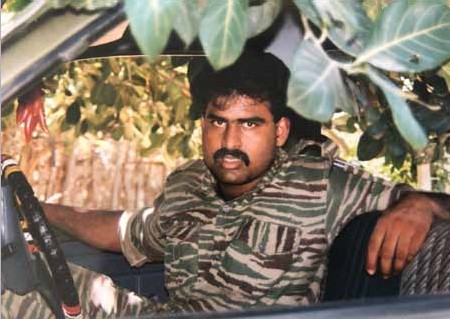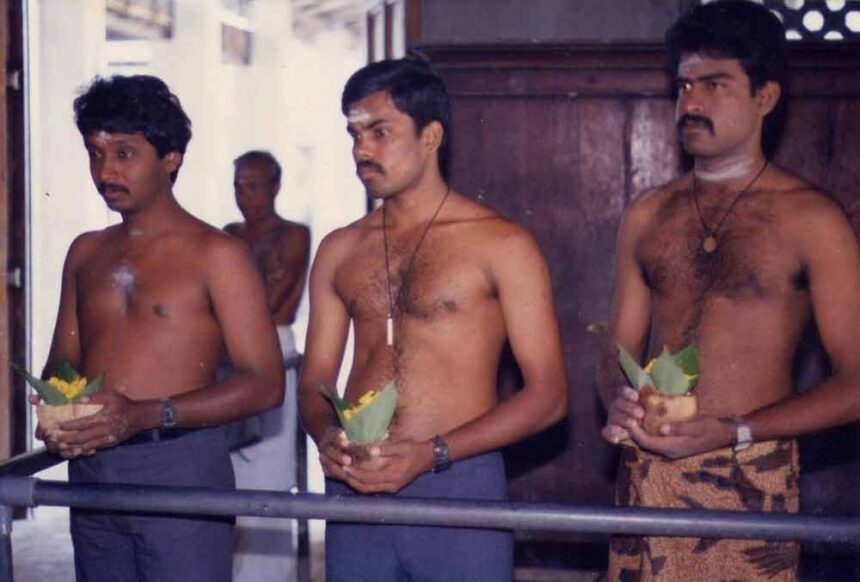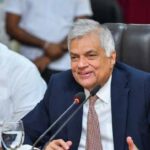Before delving into the details that led to Mahathaya’s arrest and subsequent execution, let’s take a detour to explore the broader impact of this situation. The Mahathaya’s dilemma was far-reaching, resulting not only in his death but also in the demise of 14 other high-ranking LTTE officers. This figure was confirmed by LTTE leader Prabhakaran himself to one of our sources, albeit with a tone of regretful guilt, as if acknowledging a grave mistake. Additionally, a significant number of fighters, numbers varying from 100 to 450 from the Mahathaya faction, were killed. Nobody knows the actual number.
According to multiple sources within the LTTE that spoke with the Jaffna Monitor, both LTTE chief Prabhakaran and intelligence chief Pottu Amman acted in ways that were considered unreasonable. While Prabhakaran’s actions might have stemmed from paranoia towards RAW (Research and Analysis Wing, India’s intelligence agency) or insecurity about Mahathaya, who at the time had become a prominent face of the LTTE, overshadowing Prabhakaran, many believe that Pottu Amman’s actions were driven by a specific agenda to climb the leadership ladder within the LTTE.
The Tragic Fate of LTTE Commanders: The Story of Suseelan and Many Others
The LTTE leadership carried out widespread executions that went far beyond just Mahathaya. Among those executed were technically skilled Susselan, the area commander of Kilinochchi, and Sengamalm, who had a significant role under Mahathaya at the time of his capture. Sengamalm was once a trusted bodyguard of Prabhakaran, the LTTE leader. Additionally, Prem Master, who played an important part in the Tamil Rehabilitation Organisation (TRO) – a covert arm of the LTTE functioning as an international organization aimed at helping Tamils – was also executed, among others.
Entangled in a chaotic nexus of brutality and authority were several influential members of the LTTE. Brigadier Theepan, previously the chief bodyguard of Mahathaya, ascended to command the LTTE’s formidable northern front military units. Concurrently, Colonel Jeyam, who had overseen the vital Vavuniya sector, suffered unspeakable torment and distress. Amid their tribulations, both Jayam and Theepan were subjected to the brutal and inhumane removal of their fingernails and toenails.Within the LTTE, it is said that Prabhakaran summoned Jayam following his release. Prabhakaran reportedly expressed remorse and suggested that Jayam leaves for a foreign country, offering LTTE’s assistance in helping him settle there. However, as a battle-hardened fighter, Jayam refused to leave the organization despite the unimaginable tortures he had endured. He declared his intention to fight until death. True to his word, he died on May 18, 2009, the final day of the LTTE’s military existence.
Suseelan: The Rise and Fall of an LTTE Commander
Suseelan, whose real name is Gowriharan, was known as Kannan among his village community and school friends. Originating from a well-known and prosperous upper- middle-class family in Nelliyady, Jaffna district, Suseelan’s father, Rasanayagam, owned a petrol and service station at the Nelliyady junction. In addition to this, Rasanayagam also owned extensive properties in the Jaffna and Wanni regions, including farms. Suseelan studied at Hartley College, Point Pedro. From childhood, he was technically sound and mechanically inclined. In a candid talk with ‘ Jaffna Monitor,’ a close friend of Suseelan, who studied with him at Hartley College, said that Suseelan had always been exceptionally talented in technical fields. He demonstrated this during a school exhibition by ingeniously creating biogas from cow dung and chicken droppings and then using this biogas to power a generator. This innovation was particularly significant as, at that time, the Jaffna district was isolated from electricity supply, and sources like petrol and diesel were extremely scarce.
As a member of the second batch of trainees under Indian officers at Jawalamukhi, Suseelan stood out due to his remarkable abilities. One of his batchmates shared insights about Suseelan with Jaffna Monitor. He characterized Suseelan as being not only kind and good- hearted but also exceptionally intelligent. According to this batchmate, Suseelan was distinguished by his strict discipline, natural leadership qualities, and an unwavering passion for freedom.
Suseelan was indeed a prominent figure in the LTTE and a key leader. His presence was significant during the event when the LTTE surrendered its arms, a maneuver orchestrated by the Indian Government. This highly publicized ceremony was held at the Palaly airfield in October 1987, where “Yogi” Yogaratham formally relinquished his arms. Suseelan accompanied Yogi at this event and surrendered his pistol as well.
A significant display of Suseelan’s abilities emerged during the Battle of Pooneryn in November 1993, also known as Operation Thavalai Paachchal (Frog Leap) by the LTTE. In this engagement, the LTTE successfully captured two T55 tanks. The difficulty, however, lay in maneuvering these tanks, as the fighters lacked training and familiarity with their operation. Sources from the LTTE reveal that Suseelan, armed with his robust mechanical expertise, skillfully managed to operate these tanks, overcoming a complex and challenging task. According to an LTTE source, one of these tanks was extensively used, including in a significant instance where it was successfully deployed to attack a Dvora naval boat.


Palaly Airfield, October 1987, featuring ‘Yogi’ Yogaratham and
Suseelan Surrendering Their Arms
Another friend of Suseelan shared additional insights into his family’s ties with the LTTE. He mentioned that Suseelan’s family were among the early supporters of the LTTE, dating back to the late 1970s. When Mahathaya established his base in Nelliyady, a few young men rented one of the family houses owned by Suseelan’s family, posing as students. One day, these individuals launched an attack on a police jeep, resulting in the deaths of four police officers. A Tamil police officer named Sittampalam narrowly escaped with minor injuries. This incident led Suseelan’s family to realize that those residing in their house were not students but LTTE militants, and their younger son Gowriharan was assisting them. Gowriharan later joined the LTTE, adopting the name Suseelan.

There’s a fascinating story behind his nom de guerre, ‘Suseelan.’ Credible sources told the Jaffna Monitor that Gowriharan selected this name in honour of his cousin Suseelan, a high- ranking officer in the Malaysian army who tragically died in an accident. It was mentioned that Suseelan’s family moved back to Nelliyady from Malaysia after the Second World War, and some relatives continue to live in Malaysia.
Visu, the assassin of Amirthalingam, along with Dominic, previously the leader of LTTE’s Jaffna district political wing, Newton, a senior member of the LTTE’s intelligence wing, and Mohan, were all childhood friends of Suseelan, having studied together and hailed from the same place Nelliady.
Dominic was once a prominent figure in the LTTE, serving as the leader of LTTE’s Jaffna district political wing. A former prominent LTTE guard shared an intriguing story about him with the Jaffna Monitor. He mentioned that LTTE supremo Prabhakaran often took credit for the victories of the LTTE. According to our source, who served in the LTTE for nearly 30 years, he never witnessed Prabhakaran accepting responsibility for a military loss. There was a saying in the LTTE, he noted: ‘வென்றால் தேசியத் தலைவரின் சீரிய சிந்தனை தோற்றால் தளபதிகளின் தவறு’ which loosely translates to, ‘If won, it’s the wise thought of the national leader. If lost, it’s the fault of the commanders.
Enraged by the comment, Prabhakaran swiftly dismissed Dominic from his position and expelled him from the LTTE, appointing Thamilselvan as his successor. Consequently, Thamilselvan ascended to the leadership of the LTTE’s political wing, a rise attributed to his cunning political maneuvering.

An intriguing tale also surrounds Mohan, an early childhood friend of Suseelan. His father, Sankunni Nair, a Malayalee, was married to a Sri Lankan Tamil woman. Sankunni Nair owned a tea shop in Nelliyadi, famously known as ‘Sangunni Kadai,’ which was quite popular then. Mohan, an LTTE fighter, mainly works as a driver. He was even rumoured to have been the driver for Prabhakaran and his wife Mathivathani on their wedding day. During the tenure of the Indian Peace Keeping Force (IPKF), Sankunni Nair kept up amicable relations with the Indian Army due to their shared roots. Sadly, this association had a dire outcome; he was assassinated by the LTTE under suspicion of being an informant for India.
When Mahathaya, his commander, was arrested, Suseelan remained undaunted. He confided to his friends, who later shared with the Jaffna Monitor, that he harboured no fear of arrest or repercussions, firmly believing he had committed no wrongdoing. During these turbulent times, a close friend of Suseelan met with him in Vavuniya and urged him to leave the LTTE and relocate to a foreign country. Despite this advice, Suseelan resolutely refused. He was adamant in believing that he had done nothing wrong and could not abandon the LTTE. He also expressed that he couldn’t run away like a coward, especially without making mistakes.

Suseelan was not immediately arrested following Mahathaya’s arrest; he was allowed to move freely for several months. It was during this time that Suseelan married his girlfriend, Kalpana, whose two elder brothers and another sister, all LTTE fighters, had perished in battle. The wedding, orchestrated by the LTTE, saw the attendance of notable figures, including Anton Balasingam, the LTTE’s chief political strategist, and Balasingham Nadesan, the head of the organization’s police force. There were rumours that Pottu Amman, the LTTE’s intelligence chief, was the chief guest at the wedding, but insiders dismissed these as baseless. Although the LTTE expressed a desire to sponsor the event, Suseelan’s father, Rasanayagam, a prosperous businessman, insisted on funding the wedding himself. The entire event was meticulously documented through photographs and videos by the LTTE.
During a standard one-month leave granted to newlyweds by the LTTE, Suseelan was summoned by Pottu Amman less than three weeks after his wedding. After he met with Pottu Amman, Suseelan was arrested and never returned. Initially, Suseelan’s father and siblings knew about his arrest but chose to keep it from his mother, affectionately known as Mani Akka, who had a special fondness for him as the youngest child in the family. However, a neighbour inadvertently told Mani Akka about Suseelan’s arrest. This revelation led to her tragic and immediate death from shock. The LTTE leadership’s callous nature was further highlighted during the last rites of Suseelan’s mother. According to Srilankan Tamil culture, the youngest son traditionally performs these rites. Despite the family’s pleading with the LTTE leadership to allow Suseelan to fulfill this sacred duty, their requests were mercilessly denied.
A close friend of Suseelan spoke with the ‘Jaffna Monitor’ about how deeply Suseelan’s family was affected by the back-to-back shocks. He mentioned that Anton Balasingam, the LTTE’s chief strategist, frequently visited Suseelan’s house in Nelliyadi. Suseelan’s home, renowned for its extensive library and a wide array of English news magazines worldwide, was an appealing stop for Balasingam. During his visits, he often asked for ‘egg coffee,’ a unique mixture of coffee, egg, and hot water, thoroughly blended, which was specially prepared by Suseelan’s mother, Mani Akka.
He also said that Additionally, prominent LTTE figures like Shankar, founder of the air wing and marine division, and Selvarasa Pathmanathan, the chief arms procurement officer, frequently visited Suseelan’s house, often boldly requesting meals from Suseelan’s mother in a rightful manner akin to asking for food from someone’s own mother. However, Suseelan’s close friend lamented to ‘Jaffna Monitor’ that despite these connections, none of these LTTE members offered any assistance to his family in bringing Suseelan home for the last rite.
Up to the present, the LTTE has not issued any formal statement concerning the supposed misdeeds of Suseelan or the rationale behind his execution. Additionally, the exact date of his death remains undocumented. Suseelan’s family, as per a close friend, has been waiting for over three decades. They are cognizant of his passing but are eager to determine the precise date to conduct a Moksha Archana, a ritual performed for the tranquillity of departed souls. This friend also mentioned that after the war’s conclusion and the demise of LTTE leaders Prabhakaran and Pottu Amman, numerous senior LTTE officials approached Suseelan’s family, extending their sympathies and expressing regret for their failure to prevent the injustices Suseelan suffered.
Will be continued…..



